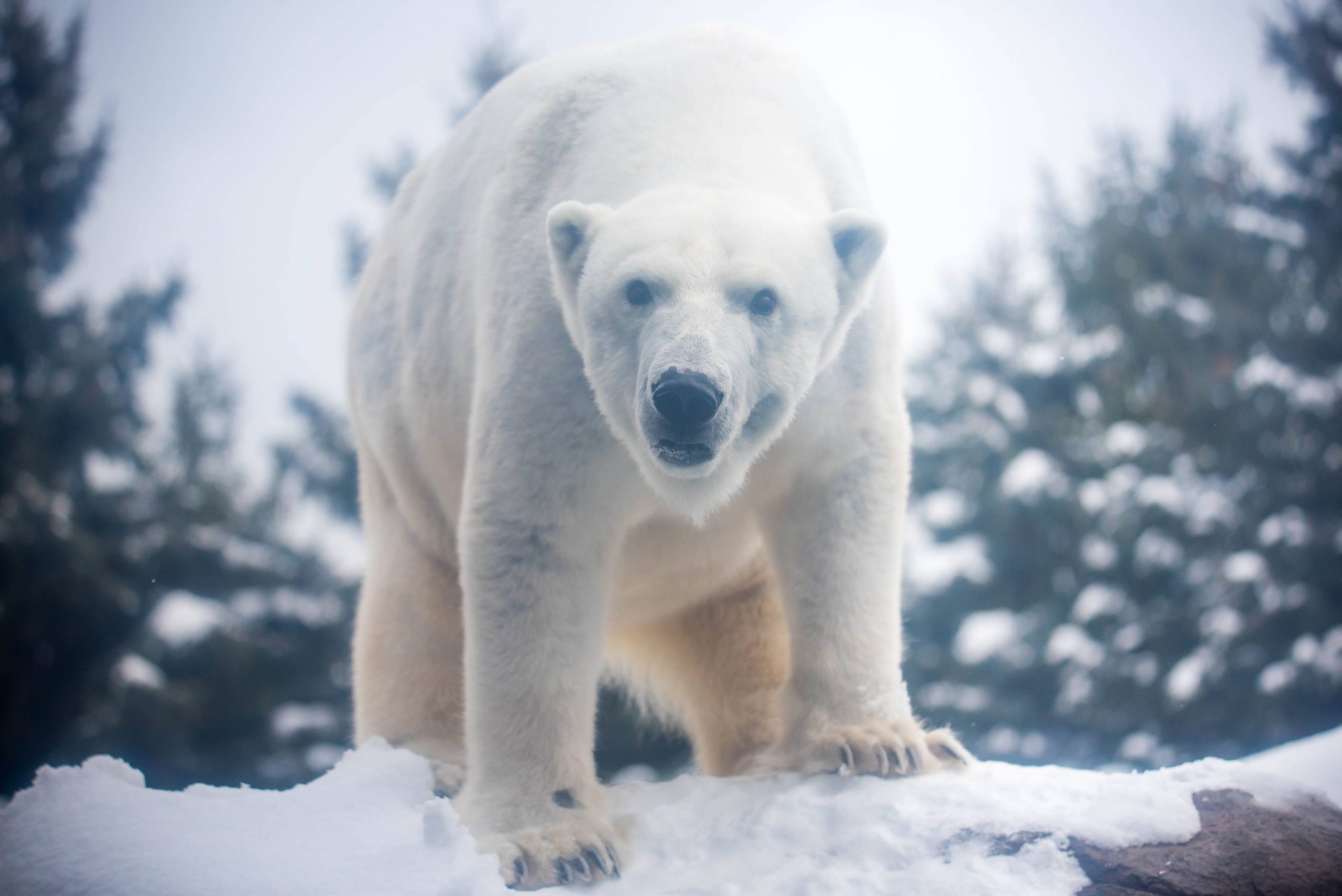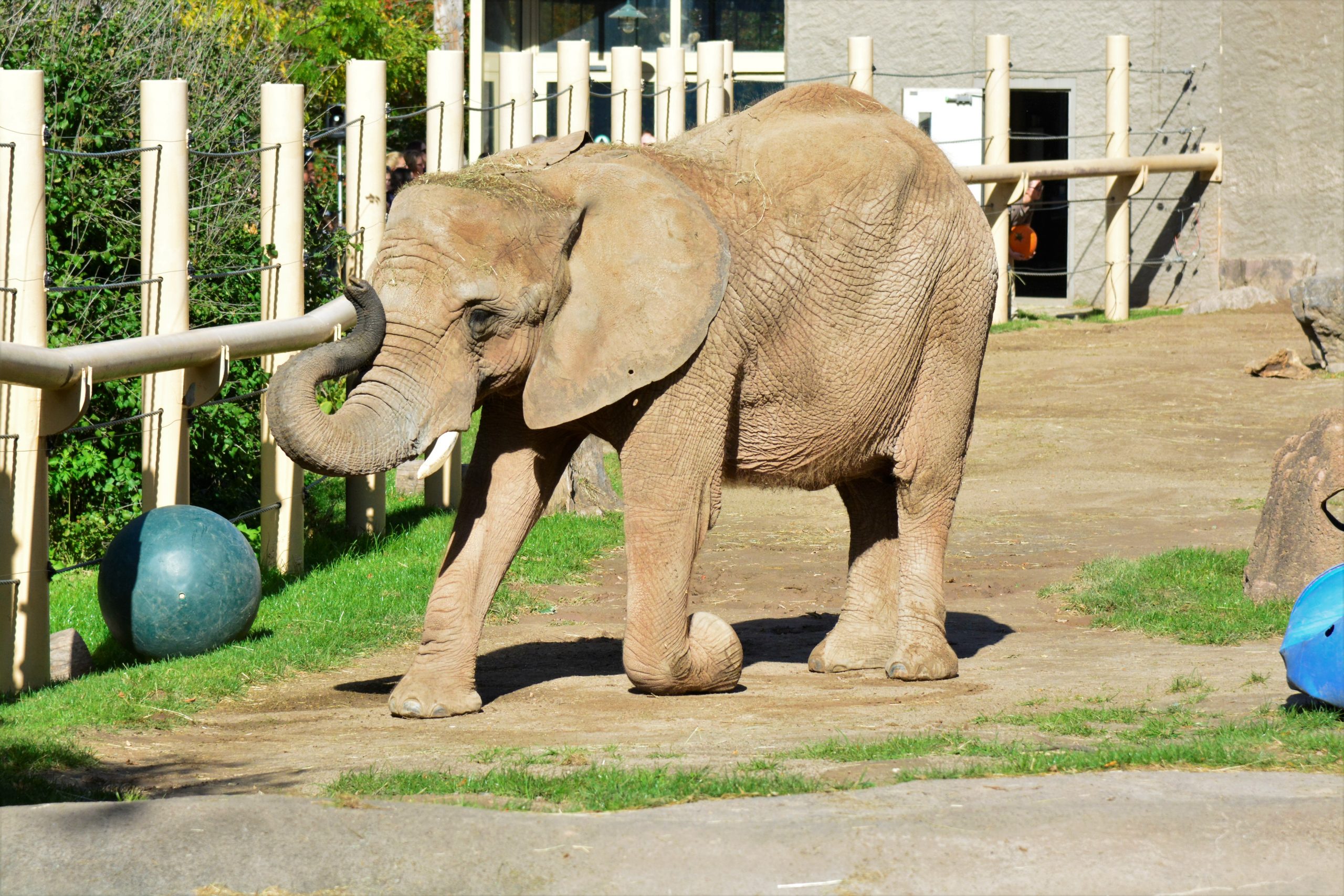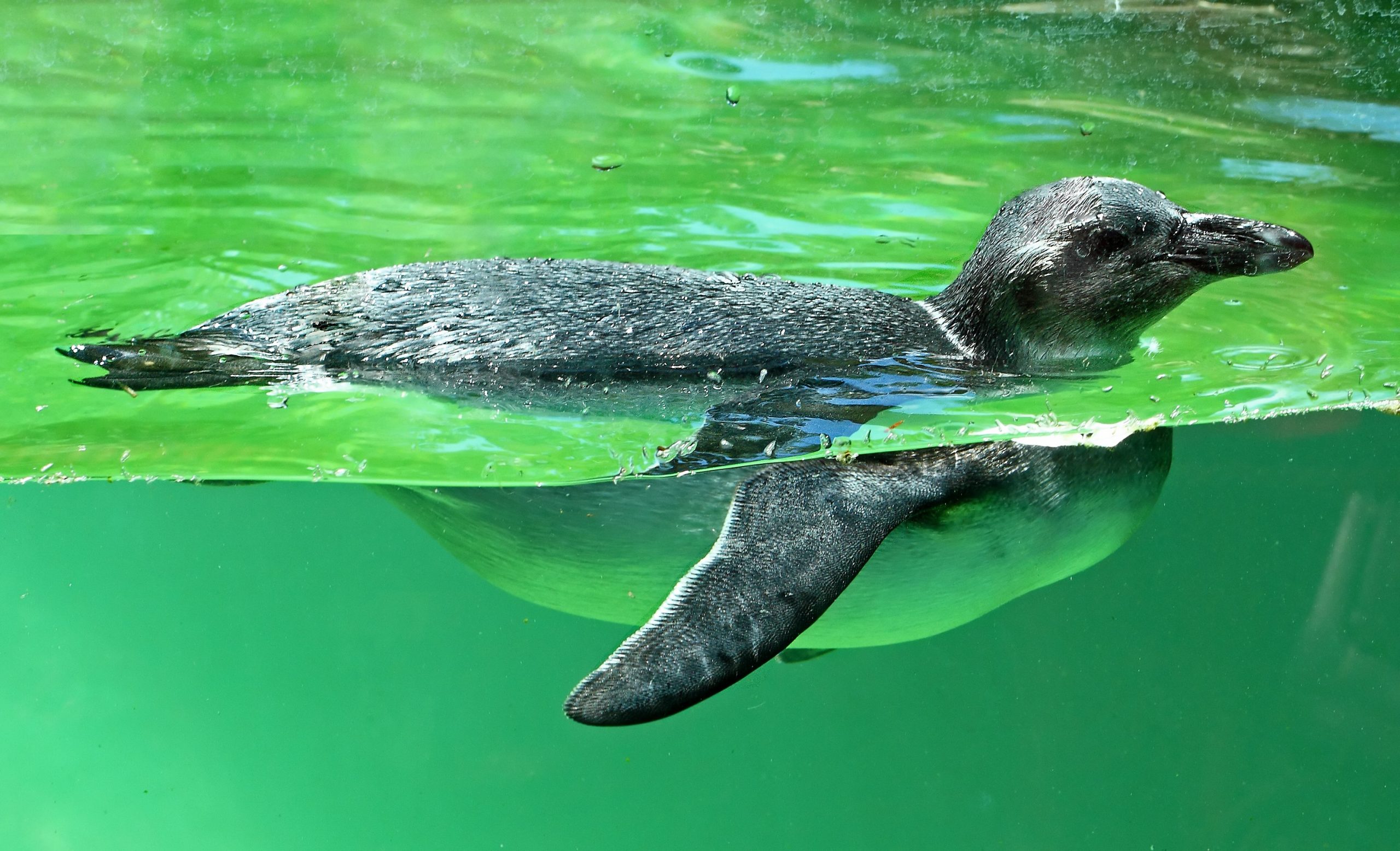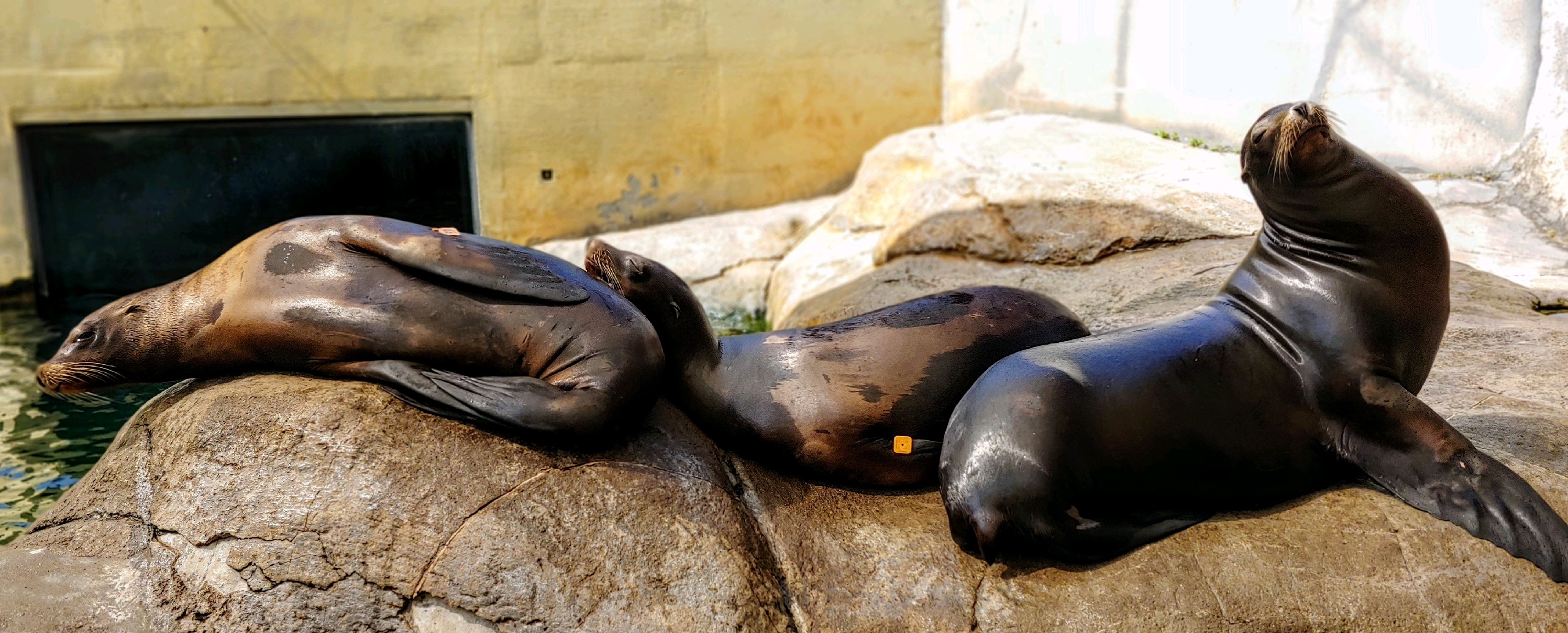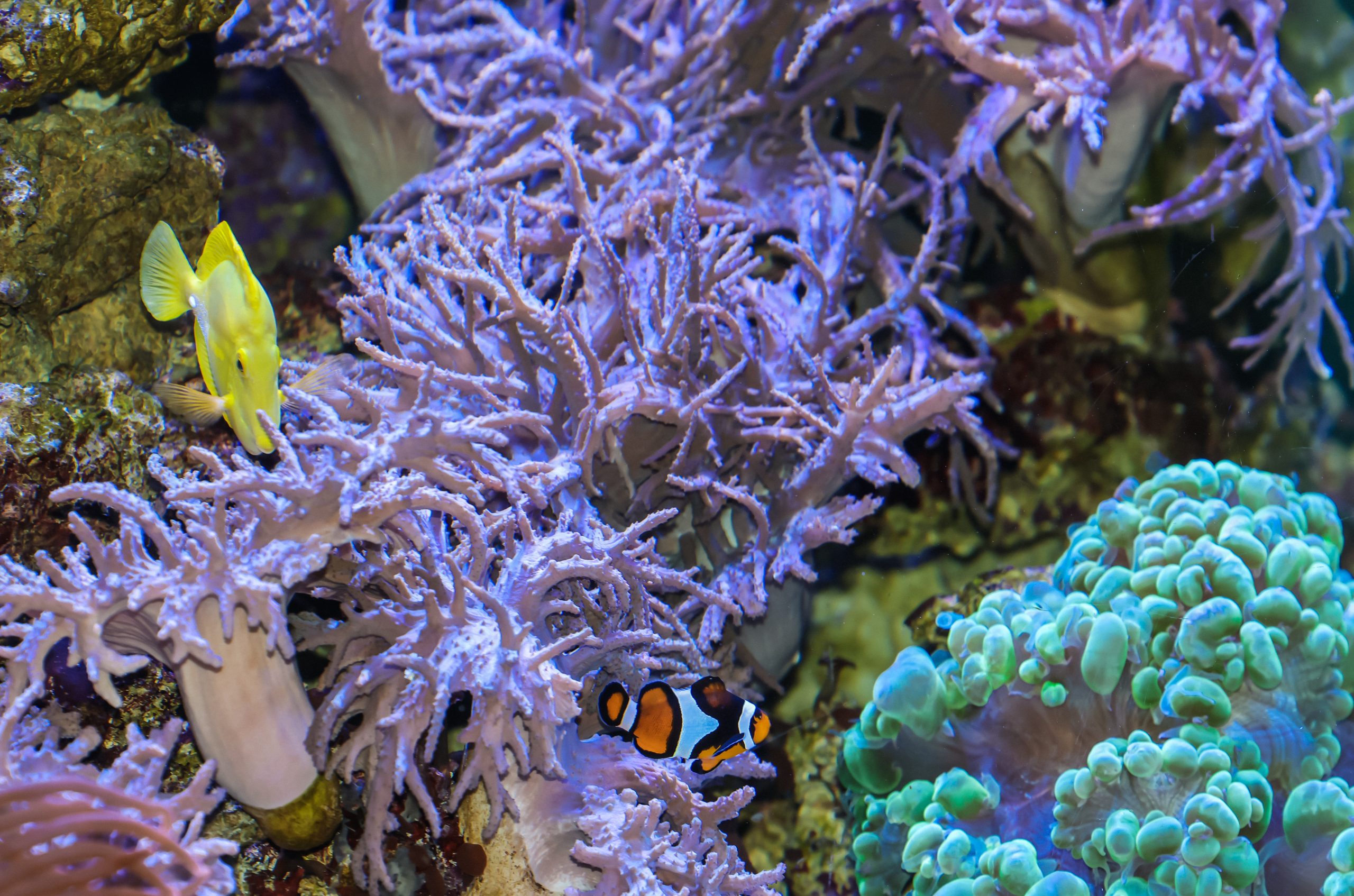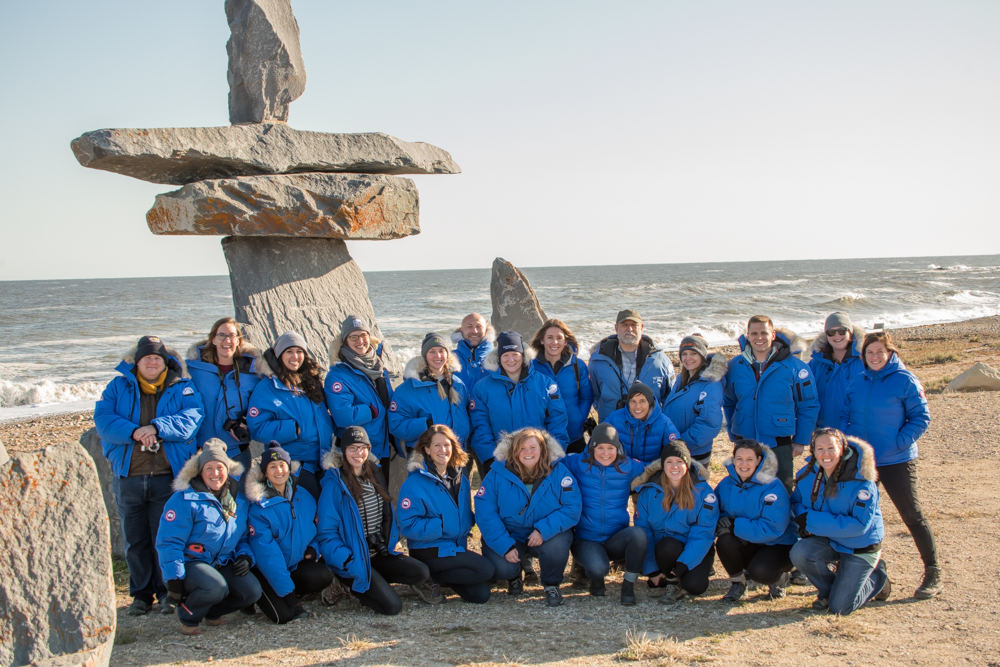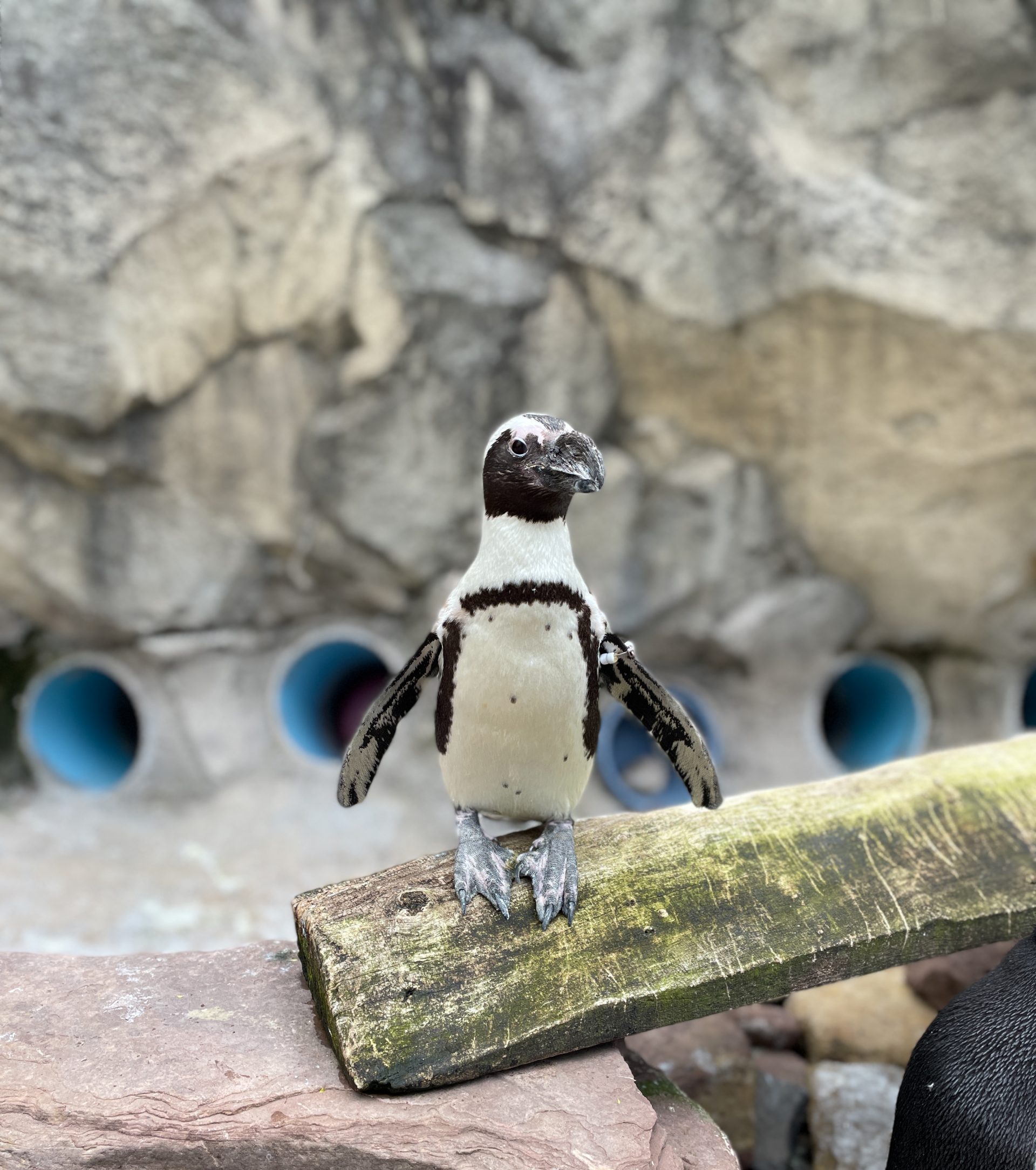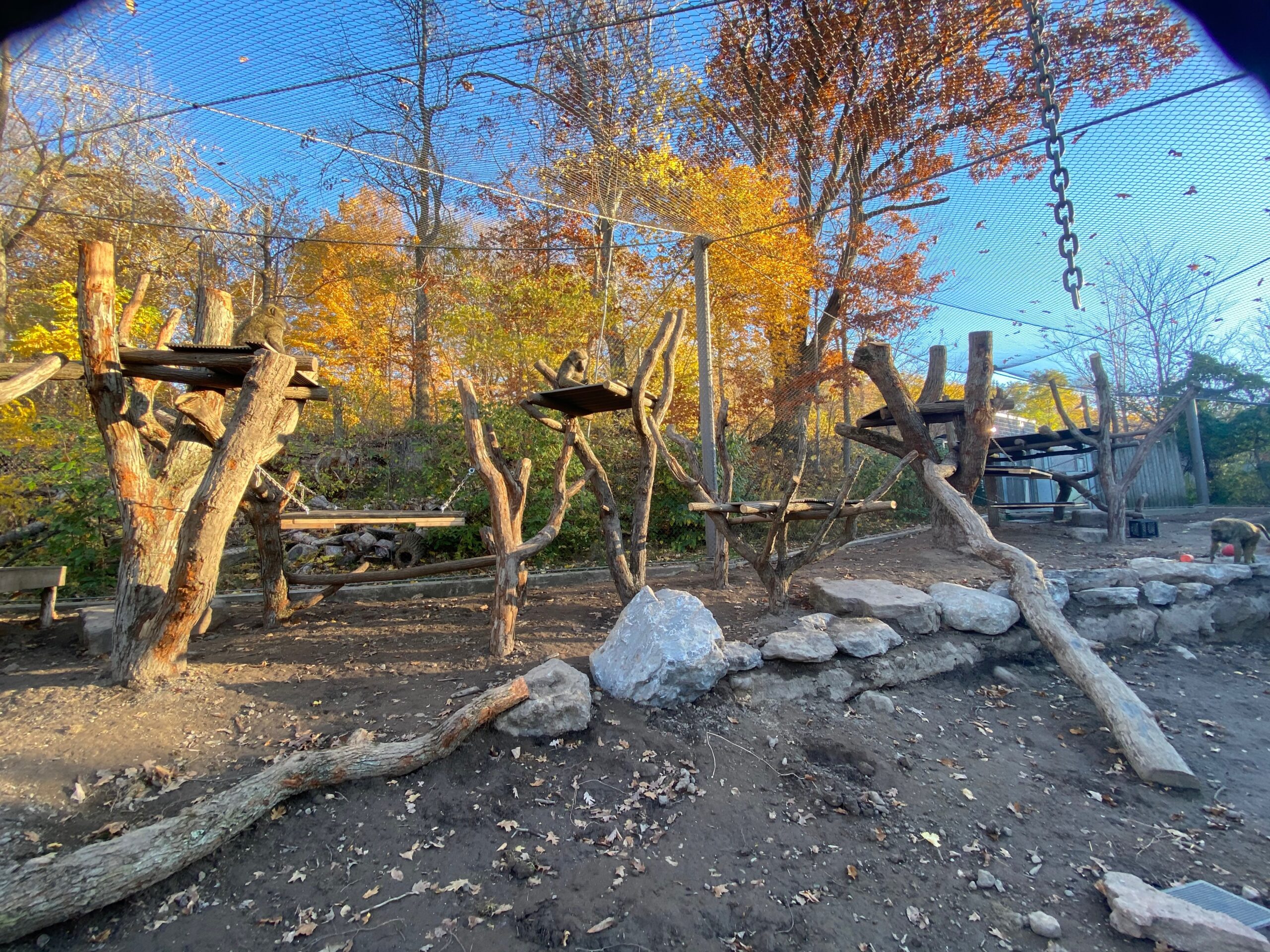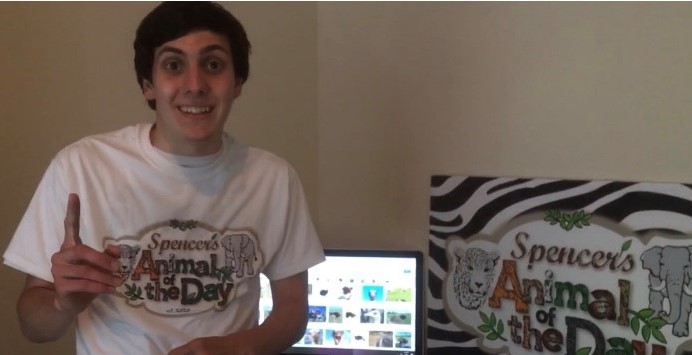July 19, 2021
Moving to Seneca Park Zoo in 2018, Anoki had a new environment and staff to adjust to. Gaining an animal’s trust is the first step to training, so I spent as much time with Anoki as I could. Whether I was just sitting with her, feeding her food or giving her fun enrichment, that time allowed both of us to adjust to each other. The treats that work best for her training are sweet potatoes and apple juice. Anoki was trained for voluntary blood collection at her previous facility. We had a blood draw sleeve fabricated so that we would be able to continue her training, although our set up was a little different from what Anoki was used to before. This was another adjustment she had to make.
In April 2019, I started the first steps of her blood draw training. I began with simply feeding her near the sleeve, letting her see it and investigate it. She would lay down in front of it, which is exactly what I was working towards. I heavily reinforced this behavior so she knew that is what I wanted her to do. Eventually, I started opening the door for the sleeve and asking her to lay down in front of it. This is when I ran into the first issue with her training. When the door for the sleeve was open, Anoki could not see me while I was sitting and asking her for behaviors. I would sit to the side of the sleeve and ask her to lay down, but she would then position in front of me instead of the sleeve. I started standing in front of the sleeve, asking Anoki to sit, and then asking her to lay down while I moved to the ground as well. She would get confused every now and then, looking around the door to try and see me, but she eventually caught on. I would feed her through holes that were in the door so she knew her treats were coming still, even though she couldn’t see me.Anoki was trained previously to touch her paw to a stick when presented, so this was the next step of her training. I started giving her the stick during other training sessions, to make sure she would always go to where the stick was. I started offering the stick in the sleeve, reinforcing her each time she touched the stick. I would move the stick farther into the sleeve, having Anoki bring her paw farther into the sleeve each time. I would also increase the amount of time she held her paw in the sleeve, making sure she held still so that eventually we would be able to safely touch her paw. This was also important because the sleeve was big for Anoki’s paw; it’s measured to fit a male polar bear paw, which is much bigger than a females.
This training continued on and off until March 2020. When Covid hit our area, we needed to ensure the safety of our staff and animals, so we stopped all training. I was able to start up on her training again in July 2020. Luckily, Anoki picked right back up where we had left off; she was offering her paw in the sleeve when asked and holding still. I asked our vet tech, Robin, to start coming to sessions. She started with sitting next to me while I worked with Anoki, giving Anoki time to adjust to a second person being present. I always had Robin feed her to help build their relationship and trust as well. Anoki would get confused occasionally when laying down again, moving over to be in front of me instead of the sleeve now that there were two of us.
When Anoki seemed comfortable, Robin began touching her paw. Anoki would pull her paw away at first, but soon got used to the feeling of being touched. She couldn’t see Robin working with her paw because of the door for the sleeve. Anoki was still moving her paw around quite a bit, flexing her toes or just moving her paw side to side in the sleeve as if she was trying to grab onto something. We thought about different things we could do to fix this problem. We played with the idea of adding an insert that would bring Anoki’s paw up to the top of the sleeve so Robin wouldn’t be reaching in as far. We decided that as long as Anoki was holding still, it was safe for Robin to be reaching down into the sleeve. We did add a bar inside of the sleeve for Anoki to grab on to. Once the bar was in and readjusted to fit her paw comfortably, Anoki hooked her claws over it and she held still.Robin’s Perspective:
Getting Anoki used to me touching her paw was only the first step in the process. While Anoki was allowing me to touch her, we still didn’t have a comfortable spot for everyone. Anoki was very focused on Randi and would only glance at me occasionally, however, we needed to get better angles on her foot. After several different trials, we found that having Randi on one side of the sleeve with me on the other and slightly centered was best. With this set up, Anoki could clearly see Randi, I had the best angle for her foot, and Anoki was comfortable. The next step was to get her used to feeling more than my hand. We started with a blunt needle. She began pulling away when we would apply pressure and again through different trials, realized that she was slightly startled by the needle. By touching her with my hand first and then using the needle, we eliminated the surprise. Now on to an actual needle.
We started with a 22g butterfly needle on a syringe. Anoki reacted to this every time by pulling away. The needle was too large. We dropped down to a 25g to get her used to the new sensation knowing we could work our way back up. The butterfly wasn’t easy to maneuver in the tight space that I had so we switched to a regular needle and syringe. We continued to acclimate Anoki to the needle sticks and finally were able to settle on a 23g regular needle with syringe. Training sessions continued with everyone in the right spot and equipped with the right tools. Randi and I would let Anoki tell us what she wanted to do that day and we always made sure we ended our sessions on a positive note whether we were able to attempt the blood draw or not. Each session allowed us to fine tune our technique and through the use of palpation, radiographs, and patience we were able to successfully draw blood from her foot.
With the sample we collected, our veterinarian is able to review results from a full test panel. This includes a Complete Blood Count (CBC) and full chemistry analysis. The results can provide information on her general well being including organ function without the need of anesthesia. The results from the recent sample that was collected shows that Anoki is in good health! Being an older polar bear it is important to monitor any changes that may occur and testing can now be done at routine intervals. We can also contribute research projects presented through the Polar Bear SSP.
– Randi Krieger, Zoo Keeper & Robin English, Veterinary TechnicianDonate
* Banner photo by Kenny Krieger

